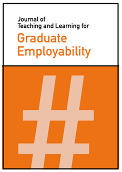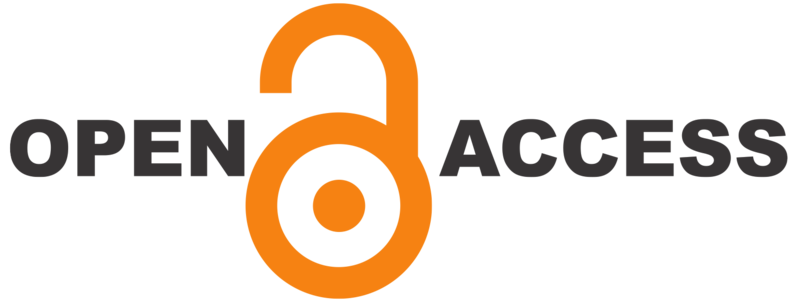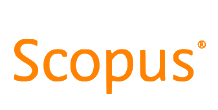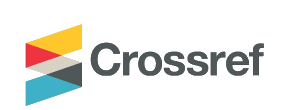STEM students see the value of LinkedIn as a career development tool and continue to use it in the long-term post-assignment
DOI:
https://doi.org/10.21153/jtlge2023vol14no1art1510Abstract
Some empirical case studies provide support for using LinkedIn as a 21st century career development tool; however, little is known about the long-term impact on students’ use of LinkedIn. A LinkedIn assignment was implemented in a third-year subject taken by students in non-specialist science, technology, engineering and mathematics (STEM) degrees. The study aimed to determine: 1) Student use of LinkedIn prior to, and during the four months after the assignment was completed; 2) Student intentions to use LinkedIn as a career development tool in the long-term future; 3) Student perceptions of a LinkedIn assignment and associated employability skills; 4) Changes to students’ LinkedIn profiles and professional connections in the two years following completion of the assignment. Four months after the assignment, students completed an anonymous and voluntary questionnaire comprised of open-ended and Likert-scale questions. Descriptive statistical analysis was conducted on the Likert-scale responses and content analysis was conducted on the open-ended responses. Students’ LinkedIn profiles were analysed upon completion of the assignment and two years post-assignment to determine changes during this time. Students saw value in the assignment and LinkedIn as a career development tool, and many thought they had developed skills in building a connected identity and social network literacy. Students were less confident in their ability to build and engage with professional networks, although they thought this was important. Most students continued to use LinkedIn in the two years post-assignment. In conclusion, a LinkedIn assignment is an effective career development tool for students in non-specialist STEM degrees.Metrics
References
Adams, K., Hean, S., Sturgis, P., & Clark, J. M. (2006). Investigating the factors influencing professional identity of first‐year health and social care students. Learning in health and social care, 5(2), 55-68.
https://doi.org/10.1111/j.1473-6861.2006.00119.x
Amabile, T. M., & Kramer, S. J. (2011). The power of small wins. Harvard business review, 89(5), 70-80. https://hbr.org/2011/05/the-power-of-small-wins
Badoer, E., Hollings, Y., & Chester, A. (2021). Professional networking for undergraduate students: a scaffolded approach. Journal of Further and Higher Education, 45(2), 197-210. https://doi.org/10.1080/0309877X.2020.1744543
Benson, V., Morgan, S., & Filippaios, F. (2014). Social career management: Social media and employability skills gap. Computers in Human Behavior, 30, 519-525. https://doi.org/10.1016/j.chb.2013.06.015
Bridgstock, R. (2009). The graduate attributes we’ve overlooked: Enhancing graduate employability through career management skills. Higher Education Research & Development, 28(1), 31-44. https://doi.org/10.1080/07294360802444347
Bridgstock, R. (2016). Graduate employability 2.0: Social networks for learning, career development and innovation in the digital age. Paper for discussion.
Bridgstock, R. (2019). Employability and career development learning through social media: Exploring the potential of LinkedIn. In J. Higgs, S. Cork & D. Horsfall (Eds.), Challenging future practice possibilities (pp. 143-152). Brill Sense. https://doi.org/10.1163/9789004400795_012
Bridgstock, R. (2020). Graduate Employability 2.0 Enhancing the connectedness of learners, programs and higher education institutions (1761140361). Department of Education, Skills and Employment. https://ltr.edu.au/resources/FS15-0241_Bridgstock_Report_2020.pdf
Bridgstock, R., Grant-Iramu, M., & McAlpine, A. (2019). Integrating Career Development Learning into the Curriculum: Collaboration with the Careers Service for Employability. Journal of Teaching and Learning for Graduate Employability, 10(1), 56-72. https://doi.org/10.21153/jtlge2019vol10no1art785
Bridgstock, R., & Jackson, D. (2019). Strategic institutional approaches to graduate employability: navigating meanings, measurements and what really matters. Journal of Higher Education Policy and Management, 41(5), 468-484. https://doi.org/10.1080/1360080X.2019.1646378
Brown, J. L., Healy, M., Lexis, L., & Julien, B. L. (2019). Connectedness learning in the life sciences: LinkedIn as an assessment task for employability and career exploration. In R. Bridgstock & N. Tippett (Eds.), Higher Education and the Future of Graduate Employability (pp. 100-119). Edward Elgar Publishing. https://doi.org/10.4337/9781788972611.00015
Byers, A. (2018). How to Cold Connect on LinkedIn. LinkedIn. Retrieved 6 August from https://www.linkedin.com/pulse/how-cold-message-people-linkedin-allyson-byers/
Campbell, M., Cooper, B., Rueckert, C., & Smith, J. (2019). Reimagining student employability: a case study of policy and practice transformation. Journal of Higher Education Policy and Management, 41(5), 500-517. https://doi.org/10.1080/1360080X.2019.1646379
Carmack, H. J., & Heiss, S. N. (2018). Using the theory of planned behavior to predict college students’ intent to use LinkedIn for job searches and professional networking. Communication Studies, 69(2), 145-160. https://doi.org/10.1080/10510974.2018.1424003
Carr, C. T., & Hayes, R. A. (2015). Social media: Defining, developing, and divining. Atlantic journal of communication, 23(1), 46-65. https://doi.org/10.1080/15456870.2015.972282
Colbeck, K. (2015). Navigating the social landscape: An exploration of social networking site usage among emerging adults (Publication No. 29242638) [Doctoral dissertation, The University of Western Ontario]. ProQuest Electronic Thesis and Dissertation Repository. https://ir.lib.uwo.ca/etd/2815
Creswell, J. W., Plano Clark, V., Gutmann, M. L., & Hanson, W. E. (2003). An expanded typology for classifying mixed methods research into designs. In A. Tashakkori & C. Teddlie (Eds.), Handbook of mixed methods in social and behavioral research (pp. 209-240). SAGE Publications.
Daniels, R. A., Pemble, S. D., Allen, D., Lain, G., & Miller, L. A. (2021). LinkedIn blunders: A mixed method study of college students’ profiles. Community College Journal of Research and Practice, 47(2),1-16. https://doi.org/10.1080/10668926.2021.1944932
Deschenes, E. P. (1990). Longitudinal Research Designs. In K. L. Kempf (Ed.), Measurement Issues in Criminology (pp. 152-166). Springer New York. https://doi.org/10.1007/978-1-4613-9009-1_7
Fowlie, J., & Forder, C. (2019). Pre-professional identity formation through connections with alumni and the use of LinkedIn. In A. Diver (Ed.), Employability via Higher Education: Sustainability as Scholarship (pp. 331-345). Springer.
Fowlie, J., & Forder, C. (2021). Using LinkedIn in the curriculum: How pre-professional identity development and celebrating success enhances graduates’ work-readiness. Proceedings of the Learning, Teaching & Student Experience 2021 (LTSE 2021), UK, 68-73 https://cris.brighton.ac.uk/ws/files/32008060/LTSE_2021_Conference_Proceedings.pdf#page=68
Fugate, M., Kinicki, A. J., & Ashforth, B. E. (2004). Employability: A psycho-social construct, its dimensions, and applications. Journal of Vocational behavior, 65(1), 14-38. https://doi.org/10.1016/j.jvb.2003.10.005
Gerard, J. G. (2012). Linking in with LinkedIn®: Three exercises that enhance professional social networking and career building. Journal of Management Education, 36(6), 866-897. https://doi.org/10.1177/1052562911413464
Hooley, T. (2017). Developing your career: harnessing the power of the internet for “digital career management”. Development and Learning in Organizations: An International Journal, 31(1), 9-11. https://doi.org/10.1108/DLO-07-2016-0066
Hsieh, H.-F., & Shannon, S. E. (2005). Three approaches to qualitative content analysis. Qualitative health research, 15(9), 1277-1288. https://doi.org/10.1177/1049732305276687
Jackson, D. (2016). Re-conceptualising graduate employability: The importance of pre-professional identity. Higher Education Research & Development, 35(5), 925-939. https://doi.org/10.1080/07294360.2016.1139551
Jobvite. (2021). 2021 Recruiter Nation Report. https://www.jobvite.com/lp/2021-recruiter-nation-report/
Khapova, S., Arthur, M., Wilderom, C., & Svensson, J. (2007). Professional identity as the key to career change intention. Career Development International, 12, 584-595. https://doi.org/10.1108/13620430710834378
LinkedIn Corporation. (2020). What is LinkedIn and How Can I Use It? https://www.linkedin.com/help/linkedin/answer/111663/what-is-linkedin-and-how-can-i-use-it-?lang=en
LinkedIn Corporation. (2021). LinkedIn Higher Education. https://university.linkedin.com/
McCabe, M. B. (2017). Social media marketing strategies for career advancement: An analysis of LinkedIn. Journal of Business and Behavioral Sciences, 29(1), 85.
McCorkle, D. E., & McCorkle, Y. L. (2012). Using LinkedIn in the marketing classroom: Exploratory insights and recommendations for teaching social media/networking. Marketing education review, 22(2), 157-166. https://doi.org/10.2753/MER1052-8008220205
McMahon, M., Patton, W., & Tatham, P. (2003). Managing life, learning and work in the 21st century: Issues informing the design of an Australian Blueprint for Career Development. Miles Morgan Australia. https://cica.org.au/wp-content/uploads/Managing-Life-Learning-and-Work-in-the-21-Century-MMcM_WP_PT.pdf
Minocha, S., Hristov, D., & Reynolds, M. (2017). From graduate employability to employment: policy and practice in UK higher education. International Journal of Training and Development, 21(3), 235-248. https://doi.org/10.1111/ijtd.12105
National Skills Commission. (2020). Employers' insights on the Australian labour market. Australian Government Retrieved from https://lmip.gov.au/PortalFile.axd?FieldID=3195317&.pdf
Peterson, R. M., & Dover, H. F. (2014). Building student networks with LinkedIn: The potential for connections, internships, and jobs. Marketing education review, 24(1), 15-20. https://doi.org/10.2753/MER1052-8008240102
Pew Research Center. (2021). Social media use in 2021. Pew Research Center. https://www.pewresearch.org/internet/2021/04/07/social-media-use-in-2021/
Pozzi, M. (2015). 'Create a Better Online You': designing online learning resources to develop undergraduate social media skills. International Journal of Social Media and Interactive Learning Environments, 3(4), 305-321. https://doi.org/10.1504/IJSMILE.2015.074011
Russ, K. R. (2015). Building professional social capital among minority business students. Academy of Educational Leadership Journal, 19(3), 271.
Slone, A. R., & Gaffney, A. L. (2016). Assessing students’ use of LinkedIn in a business and professional communication course. Communication Teacher, 30(4), 206-214. https://doi.org/10.1080/17404622.2016.1219043
Starcic, A. I., Barrow, M., Zajc, M., & Lebenicnik, M. (2017). Students' Attitudes on Social Network Sites and their Actual Use for Career Management Competences and Professional Identity Development. International Journal of Emerging Technologies in Learning, 12(5). https://doi.org/10.3991/ijet.v12i05.6778
Tomlinson, M. (2017). Forms of graduate capital and their relationship to graduate employability. Education+ Training, 59(4), 338-352. https://doi.org/10.1108/ET-05-2016-0090
University of California Berkeley Career Center. (2019). Connecting on LinkedIn: The 5-Point Email. Retrieved 6 August from https://web.archive.org/web/20221007184221/https://career.berkeley.edu/connecting-linkedin-5-point-email
Vaismoradi, M., & Snelgrove, S. (2019). Theme in qualitative content analysis and thematic analysis. Forum Qualitative Sozialforschung / Forum: Qualitative Social Research, 20(3). https://doi.org/10.17169/fqs-20.3.3376
Wetsch, L. R. (2012). A personal branding assignment using social media. Journal of advertising Education, 16(1), 30-36. https://doi.org/10.1177/109804821201600106












